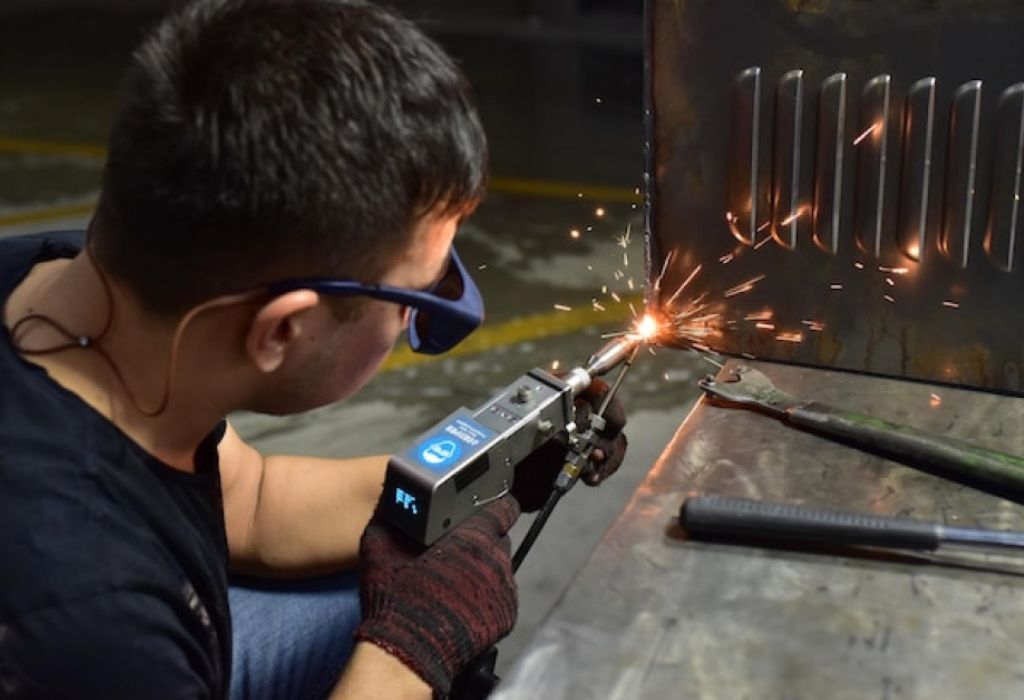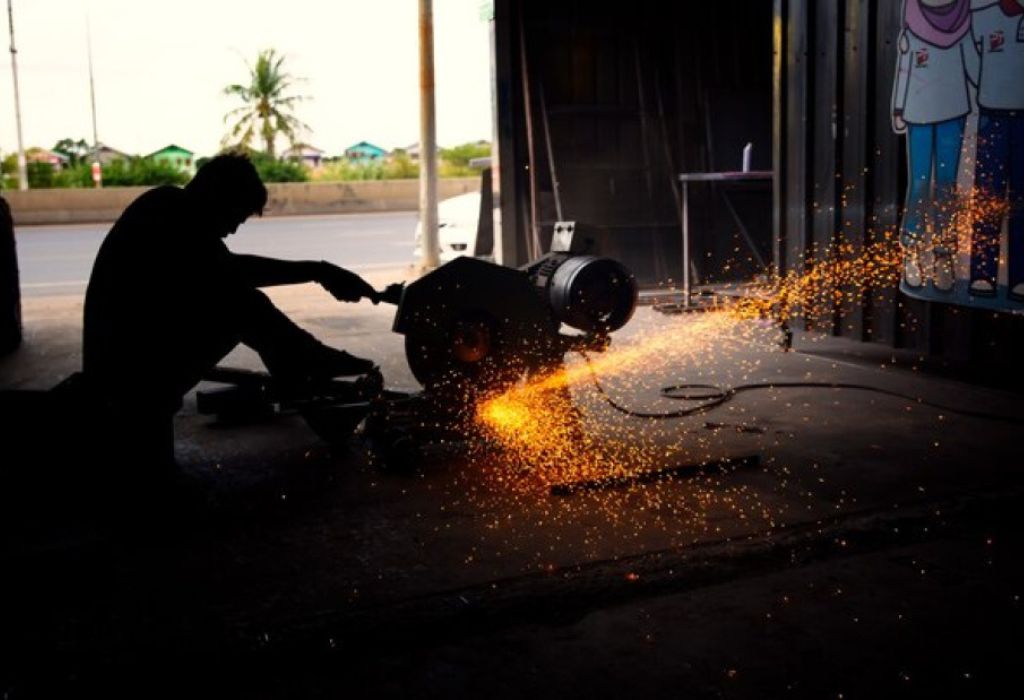Picture standing in a busy fabrication shop, sparks flying as metal meets fire. Every worker on the floor has trained hard to earn their place, but not all carry the title of journeyman welder. This designation marks a welder as highly skilled, independent, and trusted with complex jobs. The path to reach it is both demanding and rewarding.
According to the U.S. Bureau of Labor Statistics, more than 42,000 new welding jobs open each year as industries expand and older tradespeople retire.
With this demand, many people are curious about the journey and timeline involved in achieving journeyman status.
For most welders, the process takes 3 to 4 years, involving thousands of hours of on-the-job training combined with technical instruction.
This structured approach ensures welders master their craft safely and effectively. But timelines can vary based on experience, education, and regional requirements.
In this guide, we’ll break down every step — from apprenticeships to licensing — and answer the most common questions about how long it really takes to become a journeyman welder.
Quick Answer: Typical Time to Journeyman

Becoming a journeyman welder usually takes 3 to 4 years. The exact duration depends on apprenticeship length, training hours, and regional standards.
Common Questions Answered
How many years does it usually take?
Most apprenticeships last between 3 and 4 years.
Can the timeline be shorter?
Yes. Prior training or military welding experience may reduce the time.
Why does it take several years?
Because welders must accumulate 6,000–8,000 hours of hands-on practice and classroom learning.
Do all regions require the same time?
No. Requirements differ by state, union, or employer.
What comes after apprenticeship?
Welders complete exams or evaluations before being recognized as journeyman.
Apprenticeship Programs Explained
Apprenticeships are the backbone of welding training. They combine paid, supervised work with classroom education, often through unions, technical schools, or employers.
Apprentices typically work alongside journeyman welders, learning techniques such as arc welding, TIG, and MIG, while also studying metallurgy, blueprint reading, and safety standards.
Common Questions Answered
What is a welding apprenticeship?
It’s a structured program combining paid work and classroom learning.
How many hours are required?
Most require 6,000–8,000 hours of on-the-job training.
Do apprentices get paid?
Yes. Apprentices earn wages that increase as skills develop.
Is classroom learning included?
Yes, programs usually require 144–200 classroom hours per year.
Are apprenticeships available everywhere?
Yes, through unions, technical colleges, and private companies.
Education and Certifications
While apprenticeships are key, many welders also attend technical schools or community colleges before or during their training. Certifications strengthen career prospects.
Certifications from the American Welding Society (AWS) demonstrate a welder’s ability to meet industry standards. Some employers or unions require them for advancement.
Common Questions Answered
Do you need school before an apprenticeship?
Not always, but trade school can shorten training.
Which certifications help?
AWS Certified Welder, Certified Welding Inspector, and OSHA safety training.
Do certifications shorten the timeline?
Yes. Prior credentials may reduce apprenticeship time.
Is certification mandatory?
In most states, certification isn’t legally required, but many employers demand it.
How often must certifications be renewed?
AWS certifications require renewal every 6 months to maintain active status.
Skills Required to Progress

To move from apprentice to journeyman, welders must show mastery of technical and soft skills. These include precision welding, reading blueprints, understanding metallurgy, and following safety protocols.
Soft skills such as problem-solving, teamwork, and communication are also vital. Employers want welders who can complete projects independently while collaborating with teams.
Common Questions Answered
What technical skills are most important?
Proficiency in arc, TIG, MIG welding, and blueprint reading.
Why are soft skills needed?
Journeymen often work independently and must communicate clearly.
Does safety knowledge matter?
Yes, OSHA compliance and safety awareness are critical.
Do journeymen supervise others?
Yes, many oversee apprentices and less experienced welders.
Can you specialize?
Yes. Specializing in pipelines, underwater, or aerospace welding can extend training.
Factors That Affect the Timeline
Several factors can make the journey longer or shorter:
- Previous training or certifications
- Availability of apprenticeship openings
- Regional union or licensing requirements
- Specialization choices (e.g., underwater welding)
- Part-time vs. full-time apprenticeship schedules
Common Questions Answered
Does trade school reduce time?
Yes, prior coursework can shorten the apprenticeship.
Can military experience count?
Yes, many programs credit military welding work.
Does location matter?
Yes, some states have stricter requirements.
Does specialization take longer?
Yes, niche fields often require additional training.
Can dedication speed things up?
Yes, consistently logging hours may help complete faster.
Career Benefits of Journeyman Status
Becoming a journeyman welder opens doors to higher pay, job stability, and advancement. Journeymen often earn significantly more than apprentices and gain access to union benefits and leadership roles.
According to PayScale, journeyman welders in the U.S. earn an average of $56,000–$65,000 per year (source). Those in specialized fields can earn much more.
Common Questions Answered
Do journeymen earn more?
Yes, salaries are higher than apprentice wages.
Are jobs guaranteed?
While no job is guaranteed, journeymen are in high demand.
Can journeymen become supervisors?
Yes, many move into foreman or inspector roles.
Are benefits better?
Union journeymen enjoy strong benefits packages.
Does journeyman status help in other industries?
Yes, skills transfer to construction, manufacturing, and energy sectors.
Alternative Routes

While apprenticeships are the most common path, some welders reach journeyman status through alternative routes:
- Accelerated technical programs
- Military service
- Direct employer training programs
These routes may shorten or lengthen the timeline depending on structure.
Common Questions Answered
Can school-only training replace apprenticeship?
Not usually. Hands-on hours are required.
Does military training count?
Yes, many apprenticeships credit military experience.
Can experience alone qualify?
Rarely. Formal evaluation is usually required.
Do unions accept alternative routes?
Yes, but proof of training is needed.
Is this common?
No, apprenticeships remain the primary path.
Future Outlook for Welders
The demand for welders continues to grow, especially in construction, manufacturing, and renewable energy. Skilled journeymen are essential for infrastructure and industrial projects.
According to the American Welding Society, the U.S. may face a shortage of 375,000 welders by 2028 (source). This means more opportunities for those willing to complete the journey.
Common Questions Answered
Are welders in demand?
Yes, demand is rising due to retirements and new projects.
Which industries need journeymen?
Construction, shipbuilding, aerospace, energy, and pipelines.
Will automation replace welders?
Not entirely. Human skill is still vital for complex tasks.
Is it worth becoming a journeyman?
Yes, the career is stable and rewarding.
What’s the future outlook?
Strong — especially for highly skilled specialists.
Conclusion
So, how long does it take to become a journeyman welder? The journey usually lasts 3 to 4 years, depending on training hours, certifications, and specialization.
While the path requires commitment, the rewards are clear: higher wages, career stability, and opportunities to grow in one of the world’s most essential trades. For those ready to invest the time, becoming a journeyman welder is a pathway to a secure and respected career.

I’m Darrell Julian, the founder, lead writer, and hands-on welding enthusiast behind ArcWeldingPro.com. With more than 15 years of real-world welding experience, I created this platform to share what I’ve learned in the field, in the shop, and in the heat of the arc.


